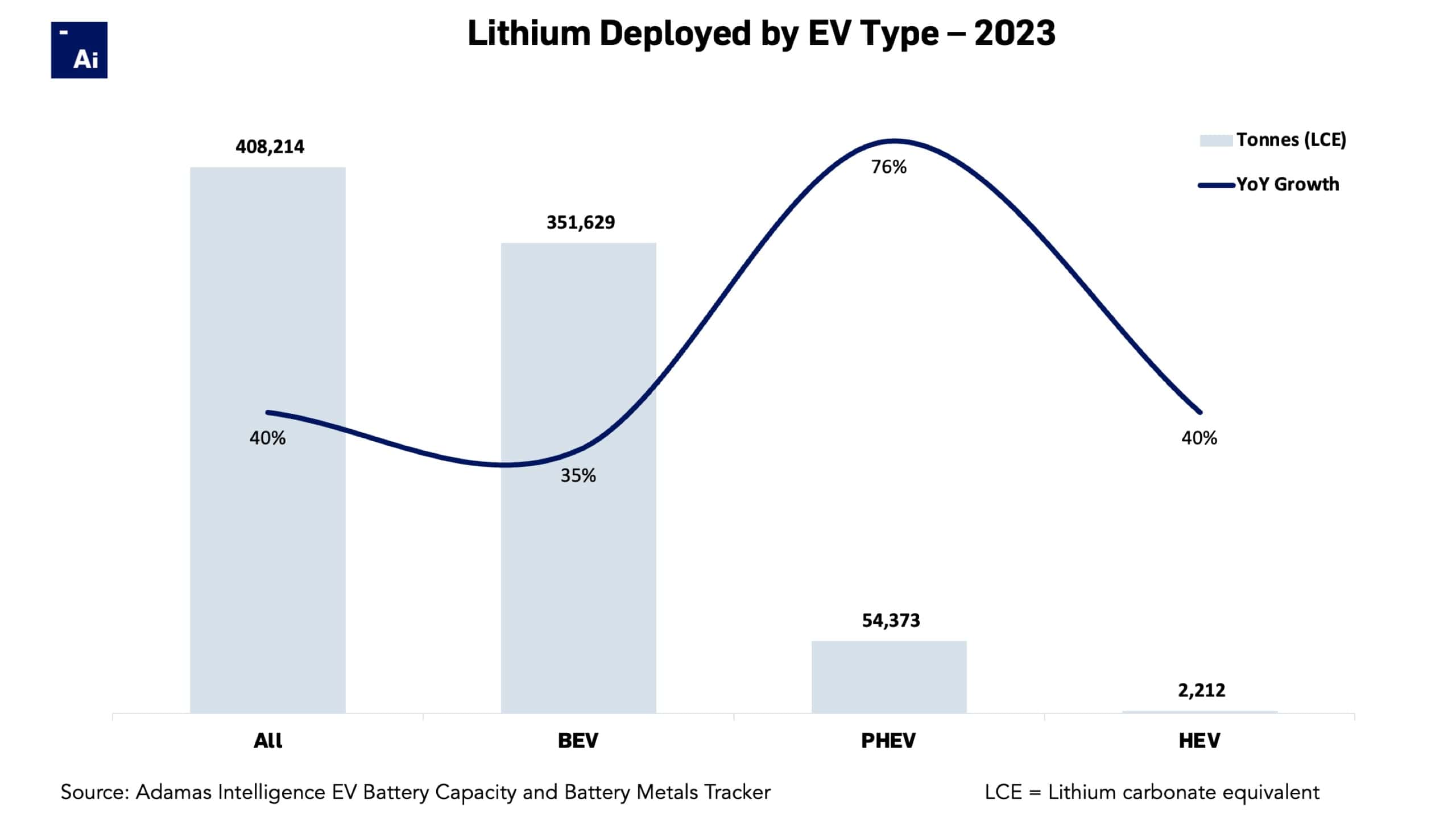EV battery lithium loadings are on the rise

LCE deployment in PHEVs up 76%
Last year 408,214 tonnes of lithium carbonate equivalent (LCE) were deployed onto roads globally in the batteries of newly sold passenger EVs, representing a 40% (or 115,804 tonne) increase over 2022.
A total of 351,629 tonnes of LCE were deployed onto roads in newly sold battery electric vehicles (BEVs) in 2023, up 35% year-over-year.
Lithium use in plug-in hybrid electric vehicle (PHEV) batteries totaled 54,373 tonnes, a massive 76% increase compared to the year prior.
Lastly, 2,212 tonnes of LCE were deployed onto roads worldwide in the batteries of conventional hybrid electric vehicles (HEVs), up a notable 40% compared to 2022.

Adamas take:
The sharp increase in global lithium deployment last year – which far outpaced annual EV sales growth of 32% year on year – came on the back of a steady rise in the average EV’s battery pack capacity (in kWh) and consequently a rise in lithium loading per EV.
The sales-weighed average EV battery capacity last year (including BEVs, PHEVs and HEVs) rose 8% to 35.6 kWh translating to a 7% increase in LCE loading per EV to 21.1kg. Were it not for a rise in LFP’s global market share last year, lithium loading per average EV would have increased even more.






